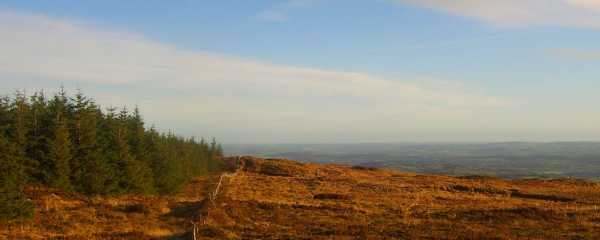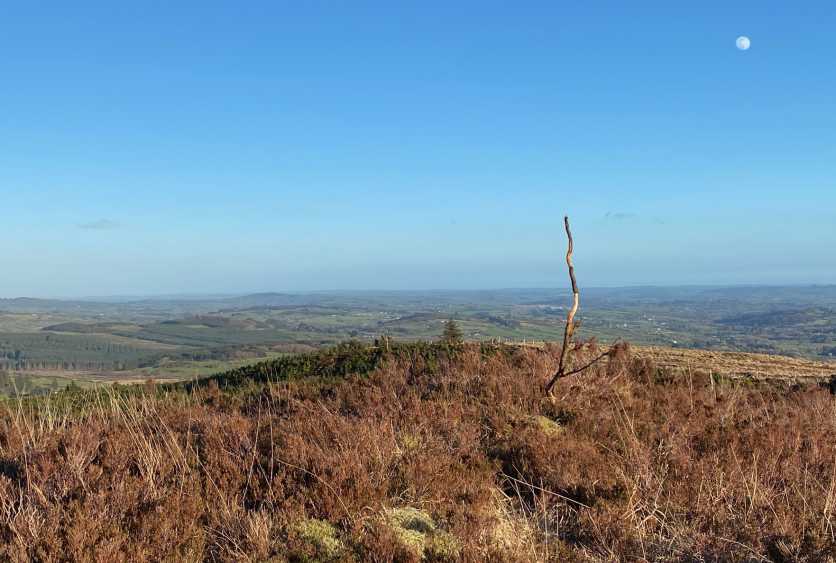And now for the interesting bit, keep your eyes open when tramping these hills.
The Mullaghanish to Musheramore Mountains SPA comprises a substantial part of the
Boggeragh/Derrynasaggart Mountains. It is divided roughly into two sectors by the R582 road
between Macroom and Millstreet. Most of the site is over 200 m in altitude, rising to heights of
475 m in the eastern sector (Musherabeg) and 462 m in the western sector (Knockullane).
Several important rivers rise within the site, notably the Foherish and Awboy. The site is
underlain by Old Red Sandstone.
The site consists of a variety of upland habitats, though approximately one-third is afforested.
The coniferous forests include first and second rotation plantations, with both pre-thicket and
post-thicket stands present. The principal tree species present are Sitka Spruce and Lodgepole Pine. Almost one-third of the site is unplanted blanket bog and heath, with both wet and dry heaths present. The vegetation is characterised by such species as Ling Heather ,Cross-leaved Heath, Bilberry, Common Cottongrass, Deergrass and Purple Moor-grass. The remainder of the site is mostly rough grassland that is
used for hill farming.
This varies in composition and includes some wet areas with rushes and some areas subject to scrub encroachment.
The site is a Special Protection Area (SPA) under the E.U. Birds Directive, of special conservation interest for Hen Harrier.
This SPA is a stronghold for Hen Harrier. A survey in 2005 resulted in 5 confirmed breeding pairs,which represents over 3% of the national total. A similar number had been recorded in the 1998-2000 period. The mix of forestry and open areas provides optimum habitat conditions for this rare bird, which is listed on Annex I of the Birds Directive. The early stages of new and second rotation conifer plantations are the most frequently used nesting sites, though some pairs may still nest in tall heather of unplanted bogs and heath. Hen Harriers will forage up to 5 km from the nest site, utilising open bog and moorland, young conifer plantations and hill farmland that isnot too rank. Birds will often forage in openings and gaps within forests. In Ireland, small birds and small mammals appear to be the most frequently taken prey.
The site also supports a breeding population of Merlin, a species that is also listed on Annex I of
the E.U. Birds Directive. The population size is not well known but is likely to be one or two pairs.
The main threat to the long-term survival of Hen Harriers within the site is further afforestation,
which would reduce and fragment the area of foraging habitat, resulting in possible reductions in breeding density and productivity.
Overall, the site provides excellent nesting and foraging habitat for breeding Hen Harrier and is an important stronghold for the species.
Linkback: mountainviews.ie/summit/789/comment/4281/
Read Less







